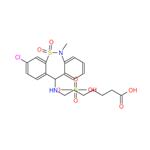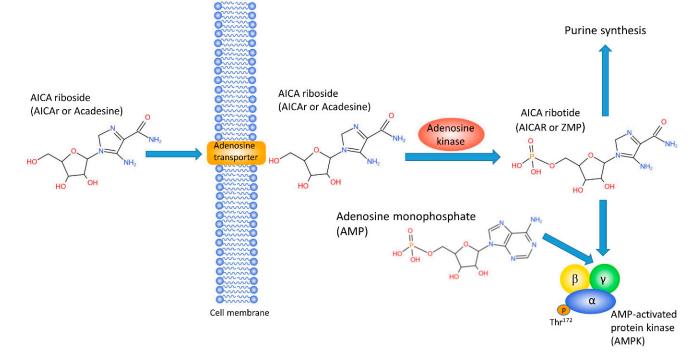Pharmacodynamics, Metabolism and Toxicity of Tianeptine sulfate
Tianeptine sulfate is the salt form of the antidepressant drug tianeptine. Tianeptine sulfate serves as a potent agonist for the human μ-opioid receptor (MOR) and is indicated for the treatment of various types of depression, including mild to severe depression, psychogenic depression, recurrent depressive disorder, and depression in elderly patients, as well as in menopausal women and individuals with alcohol-dependent depression.

Figure 1: The Picture of Tianeptine sulfate
Introduction
Tianeptine is prescribed as an antidepresant in Europe. The prescription drug is produced as tianeptine sodium. However, it can also be found on the Internet as tianeptine sulfate sold as a nootropric. Misuse of tianeptine sodium has been documented, but there’s little scientific evidence of tianeptine sulfate use. Tianeptine is an unusual antidepressant in that its mechanism of action appears to be independent from any activity at serotonin receptors or monoamine transporters. In fact, tianeptine has been shown to be a moderately potent agonist for the mu opioid receptor (MOR) and to a lesser extent the delta opioid receptor (DOR). Additionally, tianeptine’s efficacy may be related to its action on glutamate-mediated pathways of neuroplasticity. Regardless of which neurotransmitter system is primarily responsible for the observed efficacy, the MOR agonist activity is problematic with respect to abuse liability. [1]
Usage and Dosage
Tianeptine sulfate is believed to present some differences versus tianeptine sodium: it is sold only through the internet without prescription, the daily dose is 25mg per day versus 12.5mg every 8 hours and it might be more potent and long lasting. Those differences were confirmed by the patient after the prescription of tianeptine sodium.
Metabolism
Tianeptine sulfate is metabolized primarily by beta-oxidation of its heptanoic side chain 7. The metabolism of tianeptine was studied after a one-time oral administration of radioisotopically (14C) labeled compound to healthy male volunteers. After 1 week, approximately 66% of the dose was eliminated by the kidneys (55% elimination during the first 24 hr). After 24h, unchanged drug 3% of the drug was found unchanged in the urine. Three major metabolites result from beta-oxidation of Tianeptine. The metabolite profiles of tianeptine sulfate in feces and plasma were found to be qualitatively similar to that in urine. Tianeptine sulfate's mechanism of action was serotonergic, although the observed enhancement of 5-HT uptake was directly opposed to the uptake inhibition associated with the SSRIs. Both acute and repeated doses of tianeptine sulfate were observed to increase 5-HT uptake without affecting the release, binding, or uptake of an array of neurotransmitters along with an apparent lack of amine-oxidase activity. [2]
Toxicity
There are several published case reports of tianeptine sulfate intoxication and death. An overdose of tianeptine can lead to opiod-like effects and lead to respiratory failure and death, due to its direct effect on the mu opioid receptor. In addition, cardiotoxicity can result from an overdose of this medication. Adverse effects have also been observed through unregulated use of tianeptine sulfate and include nausea, vomiting, and abdominal pain. The case reports on tianeptine sulfate abuse vary greatly from the clinical studies and are difficult to compare due to the extremely high doses typically ingested (from 87.5 mg to 10 g). At least two cases of reported suicide associated with tianeptine use are known and further underscore the danger of the drug when taken at abnormally high doses. Further issues related to tianeptine sulfate overdose will be discussed in the Current Issues and Concerns section.
Current issues and concerns
Tianeptine sulfate is part of a billion dollar nootropic supplement industry and can be easily obtained in many states despite explicit warnings from the FDA against its sale and distribution. Although tianeptine sulfate is well recognized to be an opioid by recreational users, the drug is often perceived on social media as being less dangerous than other opioids or substances of abuse and is taken in doses far beyond a typical prescription. tianeptine remains a useful and underutilized tool with which to understand how a mechanistically differentiating TCA can elicit a positive signal in classical models of depression and to specifically understand the contributions of glutamate neurotransmission and/or the MOR in these models. Structurally, the tianeptine scaffold is conducive to creative medicinal chemistry, and the pharmacology of new synthetic analogs remains a fascinating prospect (recently, structural analogs of tianeptine have been reported as class I histone deacetylase (HDAC) inhibitors). [3]
Reference
[1] Yu Nishio et al, Classics in Chemical Neuroscience: Tianeptine, ACS Chem. Neurosci. 2024, 15, 3863?3873.
[2] A. J. Palma Conesa et al, Use of tianeptine sulfate over-the-counter, literature review, and case report, European Psychiatry 2023, 66, 137.
[3] Ridout, F.; Hindmarch, I. Effects of Tianeptine and Mianserin on Car Driving Skills. Psychopharmacology (Berl) 2001, 154, 356?361.
See also
Lastest Price from tianeptine sulfate manufacturers

US $0.00-0.00/KG2025-09-17
- CAS:
- 1224690-84-9
- Min. Order:
- 1KG
- Purity:
- 99%
- Supply Ability:
- 1T

US $0.00-0.00/KG2025-09-11
- CAS:
- 1224690-84-9
- Min. Order:
- 1KG
- Purity:
- 99%
- Supply Ability:
- 1MT


